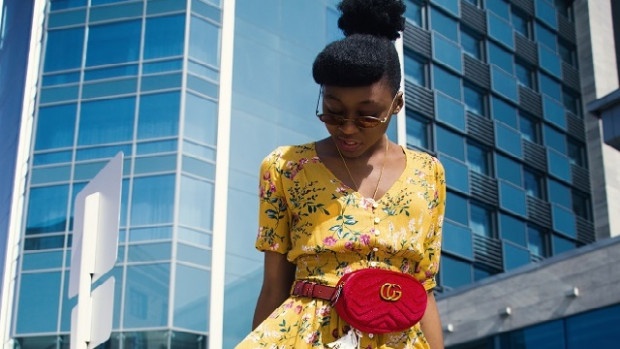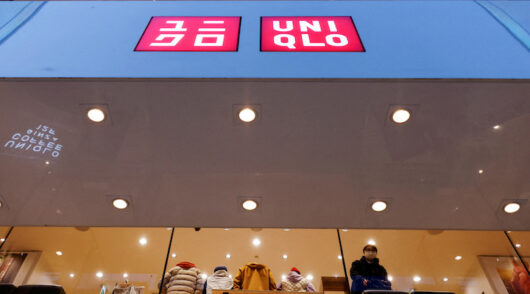In the same way technology is inherent in our hyperconnected lives, fashion impacts each of us daily. Whether it’s fast fashion, luxury, or vintage, every day we make conscious decisions on what clothing we wear and how we wear it.
The convergence of the two industries is synergistic in some ways, conflicting in others, and considering the differences between industry models can be a catalyst for improvement. There’s power in “borrowing from brilliance”, and adopting strategies and processes that are different from one another yet comparable on a deep structural level.
Let’s now take a look at what technology can learn from fashion.
The race to reinvention
Fast fashion agents Zara and Fashion Nova know how to satisfy the customer’s need for instant gratification, speed and value, dropping affordable collections in the blink of an eye.
As a result of pre-collection releases and changes in communication via social, the modern customer has been hyped to focus on the now. They want things quickly. They see a dress, they want to wear it the next day – even with luxury brands like Versus Versace. Transforming to a “see-now, buy-now, wear-now” model has had “the most extraordinary success’’, according to Donatella Versace, and has enabled the company to find a brand new audience that predominantly lives online.
For immediate models like these, two-way feedback loops are finely tuned and designed so that online and offline listening and interaction are heightened, enabling demand to be met in different ways.
Speed is not only relegated to product drops. Luxury fashion brands exceed the pace of technology when it comes to business reinvention and design discipline in direct response to growing Asia-Pacific economies, generational nuances, and shifting cultural appetites. In the words of Karl Lagerfeld, “Fashion is a sport now: You have to run.”
The bold moves of Gucci and LVMH have paid off by way of increased consumer trust and brand value. In the last year, Gucci’s brand value increased by 30 per cent, behind only Netflix (45 per cent) and Amazon (56 per cent), and LVMH’s increased by 23 per cent. Both have demonstrated excellence in bringing the inside out and challenging the impossible.
Gucci, in particular, has kept a laser-like focus on a culture of creativity and innovation, a commitment to people and its culture of purpose (their 10-year sustainable-impact plan). To get a sense of the number of creative and design drops that have been shipped from companies like these, take one look at LVMH creative director Virgil Abloh’s Instagram feed.
Clearing the conscience
In response to what was an increasing distrust, fashion brands are now sharing more openly than ever before. We’re still in the early stages of complete value chain transparency, but we’re seeing retailers audit and derisk their practices by identifying any areas that could potentially erode customer trust.
Some are using blockchain to help disclose their processes; others, like Kering and Stella McCartney, are proactively reporting on their commitment to reducing environmental impact. Most fashion leaders are becoming more visible in crises, acknowledging fault early on with a willingness to apologise. In situations where leaders deny or try to cover up (à la Dolce and Gabbana) loss in trust, loyalty and revenue follows swiftly. Customers want more honesty, and fashion watchdogs like the @dietprada Instagram account are fuelling the fight to play fair.
By comparison, technology still gets by with unclear privacy policies, bias in the use of data and artificial intelligence, and significant environmental footprints that rarely get reported on. Deep learning has a terrible carbon footprint, and training one single AI model can emit as much carbon as five cars in their lifetime.
Social devotion
Fashion is about change and evolution and continues to bring fresh thinking to brand, engagement and business models. The immediacy that Instagram and other channels has brought has democratised the fashion industry. Now we’re seeing more nuanced communities come to the fore – groups of people who don’t know each other but are bound by similar beliefs, interests and behaviours. A shift that has seen more people buy directly from those they follow, rather than the brand itself.
Social commerce like this is a blend of social and economic value, where we’re buying individual taste not a particular brand within it. Taking this further is the rise of “closet accounts”, a phenomenon whereby teenagers spend time sourcing celebrity looks on Instagram.
Seventeen-year-old Giselle Pacheco runs a closet account dedicated to the 19-year-old influencer Emma Chamberlain, and each day she spends about an hour tracking down where Emma’s outfits are from. During fashion week, research scales up to five hours a day.
Fashion insiders know customers are craving lifestyle content, not just to inspire their choices, but also for entertainment. Only a few technology companies are doing this well. Content and community building shouldn’t sit solely with the social media team, but rather with everyone in the business. Brands such as Patagonia have built on an existing subculture, like the sentiment towards transparency, and have driven social influence through content and community. And, increasingly, more fashion founders are inviting communities behind closed doors for a look at modern entrepreneurship.
Stories can be used to humanise
As brands become more content and media engines, the focus becomes tied to every objective, role and customer conversation. A sense of customer connection naturally becomes part of the culture, easily enabling affinity and a relevant, cohesive long-term story that moves the brand far beyond transactional marketing.
Building and owning a strong narrative enables fashion to shift from communicating the consumer experience to shaping it. The industry understands street culture and can balance out authenticity and exclusivity, making their brands more desirable to more customers. And it’s not just for the cool brands; mainstream brands such as Gant have done it with their “Flipping the Ladder” series. Being able to move seamlessly from breaking new ground, to maintaining cultural relevance, to direct conversations with the customer, is a real strength of the fashion industry. Not to say there aren’t any technology companies doing this, but more could be.
With customer attention levels at an all-time high, there’s never been a more exciting time to drive change. Brands that recognise this as an opportunity to address the needs and wants of the customer, strongly affirm who or what they are, and enhance the experience using technology, will be the frontrunners.<
Emma Sharley is the director of Sharley Consulting, co-founder of personalised shopping app Shop You, a startup adviser, a board member of IFAB and regularly speaks and contributes to industry publications. Contact: emmasharley.com
This story first appeared on our sister site Inside Retail Australia.






